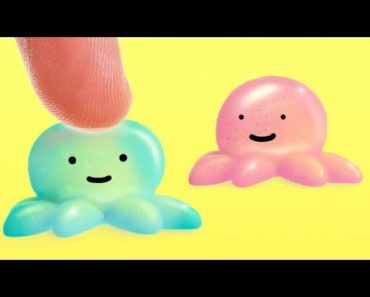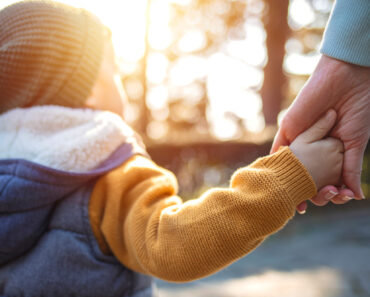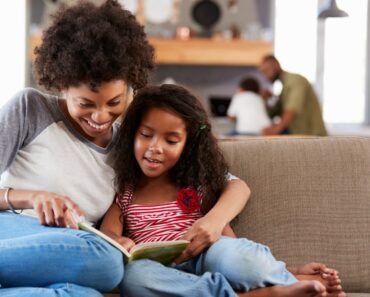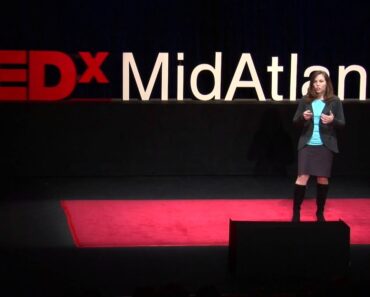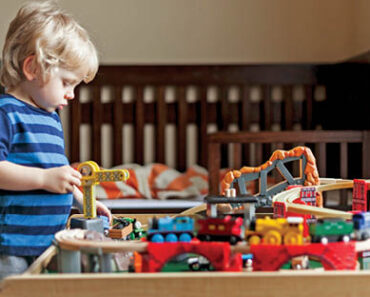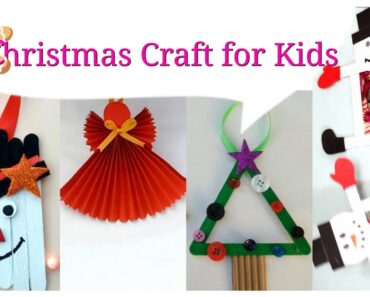Acne in children is a common skin condition during preadolescent and adolescent years. There are several forms of acne, including blackheads and cysts, and they mostly occur due to excess oil production due to hormonal changes. Painful pimples on the face, forehead, shoulders, and back are characteristics of acne.
Despite the discomfort caused by acne, the condition is treatable. Acne can also be prevented through appropriate measures. Read on to learn about the causes of acne in children, the types of acne, the treatment options, and ways to prevent it.
Prepubertal Acne In Children
Acne is common during the teenage years but may also occur before and around puberty. The following are the various types of acne found in childhood before the onset of teenage years (1).
- Neonatal acne: It is found among infants up to the age of six weeks. It mostly presents as blackheads or whiteheads over the scalp, cheeks, forehead, chin, upper chest, and back. It occurs due to the crossing of androgen hormones from the mother to the baby via the placenta.
- Infantile acne: It is found in infants between the ages of six weeks and 12 months. The common site of this acne is the cheeks. It occurs when testosterone hormones cause over stimulation of the sebaceous glands (oil glands). It tends to be more common among boys.
- Mid-childhood acne: It is a rare type of acne that occurs in children between the ages of one and six years. It may occur due to excess production of androgen hormones in the body.
- Preadolescent acne: It happens in children between the ages of seven and 12 years. It is common for this age group and marks the beginning of puberty. Preadolescent acne is commonly seen on the T-zone of the face, which includes the eyebrows and the nose.
Except for preadolescent acne, the remaining forms of acne are temporary and mostly uncommon. Acne in children refers to preadolescent acne since it is the condition that marks the beginning of hormonal changes that would continue through the teenage years.
Causes Of Acne In Children
Acne occurs when the skin pores are blocked by a mixture of sebum (oil), dead skin cells, and bacteria (2). The hormonal changes in preadolescents cause the sebaceous glands (oil glands) to produce excess sebum (oil). The excess oil clumps with dead skin cells and clogs the skin pore, causing acne. If bacteria invade the trapped oil, it can cause the acne to become painful and inflamed (3).
There are several factors or situations that lead to hormonal imbalances or overactive sebaceous glands, thus leading to acne. The following are conditions that could cause acne in children (4) (5).
- Excessive production of sebum. The increased production of androgen among preadolescents causes sebaceous glands to enlarge and produce more sebum. Younger children may have more sebum due to overactive sebaceous glands.
- Plugged hair follicles due to oil and dead skin cells. Sebum may become trapped in the hair follicle and form a sebum plug consisting of dead skin cells, leading to acne breakouts.
- Bacterial and fungal infections. It occurs when bacteria or fungus invades pooled oil inside a pore or hair follicle, leading to infected and inflamed acne.
- Dietary habits. Some food items may affect the production of sebum, eventually leading to acne breakouts.
- Certain medications. Some medicines may overstimulate the sebaceous glands or cause hormonal changes that eventually lead to acne.
- Air and weather conditions. Children with sensitive skin may develop acne due to air pollution or high humidity.
- Certain skincare products. Some skincare products may stimulate the production of excess sebum, leading to acne.
- Hereditary and genetics. If a child has a family history of acne, they could be at a higher risk of developing preadolescent acne.
Types Of Acne
There are many types of acne depending on the secretion of the sebum and the extent of blockage of a pore or hair follicle. The following are the types of acne that may affect children (2).
- Blackheads: These are open skin pores filled with excess oil and dead cells and appear like dirt-filled pores over the skin.
- Whiteheads: These are closed, white- to yellow-colored skin pores clogged with oil and cell debris.
- Papules: These are the reddish or pinkish skin spots that are filled with sebum, bacteria, and pus.
- Pustules: It is a pus-filled lesion on the skin. It occurs when the oil inside the clogged pore is entirely infected by bacteria. When picked or scratched, a pustule may leave a scar on the skin.
- Nodules: These are large and hard pimples situated deep within the skin. Nodules tend to be painful.
- Cysts: It occurs when there is pus accumulation deep within the skin. It often causes scarring.
Complications Of Acne In Children
The complications of long-term acne include the effects of acne on the skin and the psychological effects of acne on a child. The following are the common complications of acne (6).
- Scars
- Hyperpigmentation
- Lack of self-esteem
- Social withdrawal
- Emotional distress
When To Visit A Dermatologist?
You may visit a dermatologist if your child displays any of the complications of acne. Also, see the dermatologist in the following situations.
- Sudden outbreak of severe acne
- Pus formation within the acne
- Inflamed, itchy, and painful acne
- Acne always occurs as nodules and cysts
- Ruptured acne pimples always ooze pus and blood
Diagnosis Of Acne In Children
A dermatologist can usually diagnose acne through visual inspection alone. The doctor may consider the following procedures to determine the underlying cause of acne in a child (7) (8).
- Check for early puberty
- Assess the levels of hormones through blood tests
- Ask about menstrual cycles
- Determine a family history of acne
- Check for the child’s lifestyle and dietary habits
- Check if the child has any medical condition or is on any medication
Treatment Of Acne In Children
The treatment of acne in children will depend on the severity of acne, the child’s age, and if the child has any medical condition. Mild acne may not require any treatment. Acne due to a medical condition or medication is usually cured when the underlying cause is addressed.
Severe preadolescent acne due to hormonal changes may require treatment. The treatment options are usually the same for children and adults.
The following are the different types of treatment options for acne (1) (9).
Skin care
- Over-the-counter face wash with benzoyl peroxide and salicylic acid
- Mild face cleansers to wash the face, regularly
- Over-the-counter antibacterial soaps and creams
Lifestyle modification
- Healthy nutritious diet
- Exercise
- Sufficient good sleep
- Management of stress
- Good personal hygiene
Medications
- Vitamin A derivatives
- Topical antiseptic
- Anti-inflammatory medicines
- Antibiotics
- Benzoyl peroxide gels and washes
- Medicines with retinoid acid
- Antibacterial and antifungal creams
The dermatologist may prescribe additional medicines beyond those mentioned above. If you are unsure about the right over-the-counter facewash or soap for your child, speak to the doctor. Never pick, scratch, or pop acne pimples as it may lead to scars.
Natural Home Remedies For Acne
Parents may consider natural home remedies to reduce acne and improve the child’s skin. The following are some natural home remedies for acne. There is no scientific evidence to back these remedies. Therefore, speak to a dermatologist before trying any of them.
- Aloe vera gel: It is a natural product that soothes the skin and acts as an oil-free moisturizer. You may apply it to acne once a day.
- Honey: It has natural antibacterial properties and may help in cases of bacterial acne. You may apply honey to the child’s affected skin once a day.
- Steam: Steam opens the pores, removes dead cells, and moisturizes the skin. Make sure you supervise the child when they take steam to prevent any accidental burns.
- Garlic: It is rich in antioxidants and is considered an antiseptic. You may apply a small quantity of fresh garlic paste to the acne, leave it for a few minutes, and wash it with water.
- Apple cider vinegar: It is known for its anti-inflammatory and antibacterial properties. Dilute a tablespoon of apple cider vinegar in 200ml of water. Soak a cotton ball and apply it to the affected skin. Rinse with plain water.
- Cucumber: Cucumber has high moisture content and is considered to have anti-inflammatory properties. You can blend cucumber into a paste and apply it to the affected skin for a few minutes each day.
Prevention Of Acne In Children
The hormonal changes and the effects of hormones on sebaceous glands during the preadolescent phase cannot be changed. However, you can reduce the risk of acne by preventing the buildup of oil and the accumulation of dead skin cells.
The following measures could help prevent acne in children (8) (10).
- Keeping the face’s skin clean
- Avoiding scrubs and exfoliating brushes as these may exacerbate oil production.
- Observing good hair and scalp hygiene
- Always washing away the sweat on the face and other acne-prone areas of the body
- Identifying the skin type, and using suitable moisturizer and sunscreen
- Using oil-free and water-based skincare makeup products
- Avoiding touching acne-prone areas
- Observing careful hair removal procedures
Acne is a common condition during teenage years but can also occur in preadolescent years of childhood. Although it causes visible skin symptoms, several acne treatment procedures are available. Adequate care and hygiene can help minimize the accumulation of sebum, thus reducing the risk of acne in children.
References:
Recommended Articles
